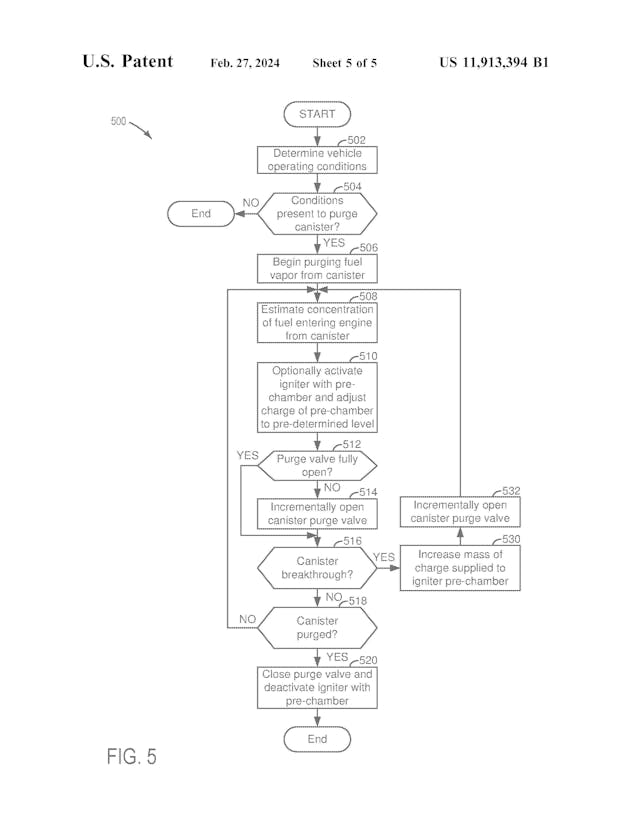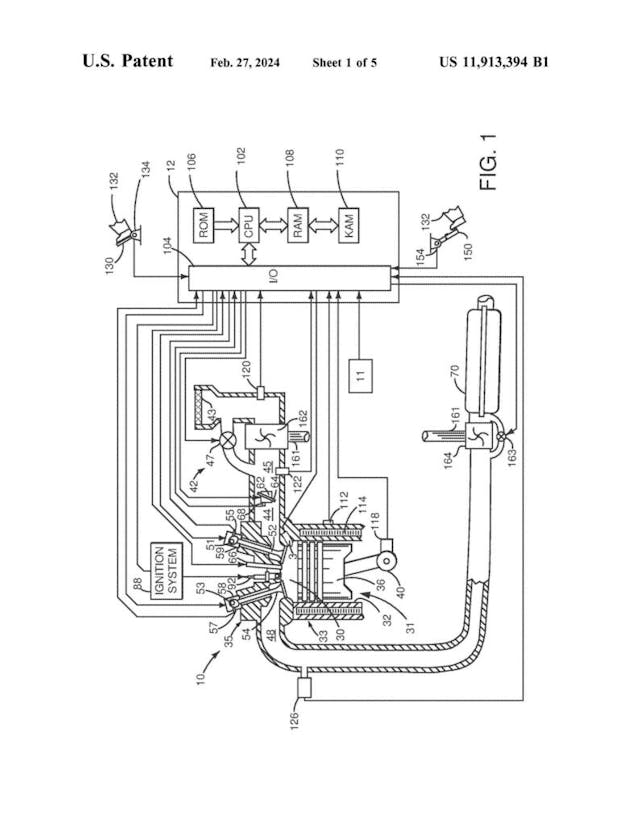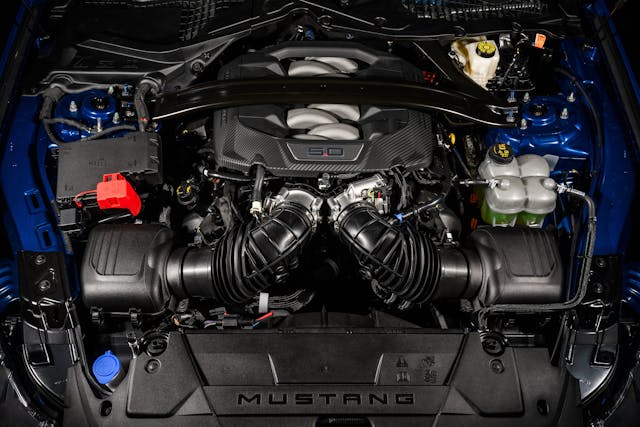Ford Patents Potential ICE-Saving Technology
Engineers at Ford have filed a patent for a pre-combustion system that could dramatically reduce emissions and, as a result, earn a reprieve for gas-powered cars in an era of on-going electrification.
You might want to grab a coffee at this point as it’s going to get pretty technical. The idea is to take the gases captured by a positive crankcase ventilation system, or other evaporative emissions system, and cycle them into a pre-combustion chamber, instead of storing them in a carbon-filled canister, and periodically purging back into the intake, as is convention.
In traditional PCV systems the rate at which emissions are generated can sometimes exceed the purge rate and, when this happens, the gases are vented to the atmosphere, which rather defeats the object of the exercise. The Ford system makes much better use of any unburnt fuel coming through by channeling the vapors into a pre-chamber with an igniter.
“In particular, the approach may reduce an amount of time it takes to purge a carbon filled canister of fuel vapors,” reads the filing with the United States Patent and Trademark Office, first reported on by CarBuzz. “Additionally, the approach may improve combustion stability during purging of fuel vapors. Further, the approach may reduce evaporative emissions by increasing fuel vapor flow during conditions of hydrocarbon breakthrough of the carbon filled canister.”


Overall the system could lead to a more efficient fuel burn, potentially increasing power as well as reducing emissions. As an added benefit the buildup of carbon deposits on valves from unburnt fuel would also be reduced, improving engine longevity.
Obviously it’s early days and the system could prove too complex and expensive to manufacture, especially when the Blue Oval is investing heavily in electrification. However, it’s still good to see that Ford hasn’t given up on the power of combustion just yet.
***
Check out the Hagerty Media homepage so you don’t miss a single story, or better yet, bookmark it. To get our best stories delivered right to your inbox, subscribe to our newsletters.



The arredy done that,
They call a “TURBO CHARGER IN THE 1940”..
Didn’t navistar do this back in the early 2000s with diesel engines and get sued over it?
Wishful thinking. Taking a technology that’s already grown overly complex due to endless government regulations and making it still more complex for marginal gains is an interesting blackboard idea, but a non-starter. Let it go.
Stupid headline. Stupid article. Virtually an inconsequential ‘efficiency improver” for ICE. There is NO reduction in CO2 emissions… no reduction at all. It just means you don’t have to suck absorbed hydrocarbons out of a charcoal filter. It doesn’t improve the EFFICIENCY of ICE at all. 2/3 of the fuel burned in ICEs is converted to heat that does no work. 2/3 of the CO2 produced by ICE has done NOTHING to move people or goods over any distance. Only 1/3 of the energy produced by ICE fuel can be used to actually MOVE the vehicle. 95% of the energy put into an EV is returned as movement of the vehicle/cargo/passengers from one place to another. Until there is a fusion reactor that fits under the hood of a car, nothing is going to beat the efficiency of EVs. And I do not mean the efficiency of battery EVs. Battery EVs are a temporary aberration while we wait for the REAL energy storage solution for EVs (solid state energy storage systems) that will completely eliminate everything people think make EVs “inferior” in any way. SSESS recharge as fast as you can deliver power… ultimately, recharging will take less time than filling at a pump. And you won’t even have to get out of your car to recharge in 2 minutes. You may not even have to EVER “recharge” your car as a daily or even weekly procedure. There are already projects underway that will demonstrate “charge while you drive” and these are currently in three different states. You may be able to drive 10 miles and get a 50% recharge during those 10 miles. Without ever having to enter a “recharge station” of any kind. Just drive on roads you normally use. The only thing that has any hope of making ICE even remotely close to EVs in terms of efficiency is that if new ICE engines can be manufactured that do not absorb heat from the combustion process. If 100% of the heat could remain contained within the exhaust-gases, energy from all that “waste” heat could be used to make electricity to drive an aux electric motor. Designing an ICE engine that does not absorb and re-radiate heat energy is much harder than designing EV technology from scratch. The most efficient way to use the excess heat is probably to use it operate a small steam turbine operating at very high RPM to operates an alternator or generator to produce power to motivate or save for later use in on-board electrical storage.
A “traditional PCV system” has nothing to do with purging. Your third paragraph has confused two drastically different systems. Although Ford’s system will use both the PCV system and the EVAP system, there’s no purging that goes on within a PCV system. Traditional PCV systems vent directly into the intake, not a canister.
An other system that tends to go broken and fixing cost least 2000 bucks. Better to go for synthetic windpower produced methan or methan sone from biowaste – “biogas”. With these all existing combustion engines comes more environmental safe than EL cars. We have been on the moon [have we really?] but we tends to make stupid decisions all the time.